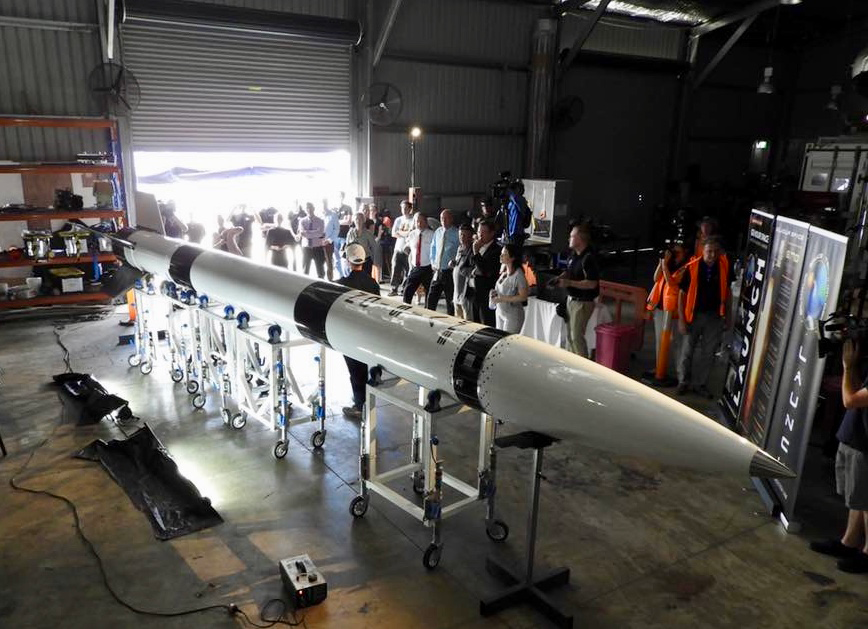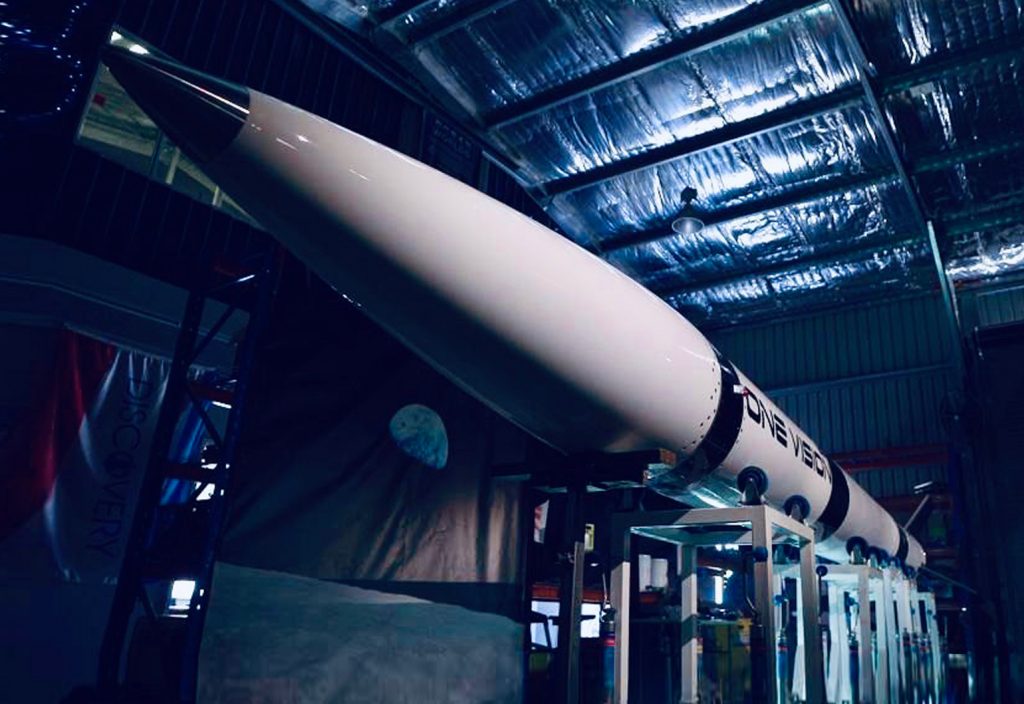Gilmour Space Technologies recently unveiled its locally built Ariel Class rocket and mobile launch platform – another step towards its goal of delivering Australia’s first commercial launch.
CEO Adam Gilmour believes the space industry has the potential to pick up where the Australian car manufacturing industry left off, generating work for associated businesses and their employees.
“We already work with more than 300 companies,” he told create.
When the Queensland Government invited Gilmour to present to Parliament late last year, he shared with them his thoughts about the state’s potential for a vibrant space industry.
More recently, Government representatives visited Gilmour’s Gold Coast factory just in time to see their newly completed ‘One Vision’ rocket and mobile launch site, which he hopes will be the first to send a commercial vehicle into space from Australian soil.
Preparing for lift-off
Gilmour explained that the One Vision rocket has been constructed to flight test the company’s hybrid-fuelled first stage orbital engine.
“There’s a very big difference in aerospace between testing something on the ground and actually testing it in the air,” Gilmour said.
Gilmour estimates his team will be ready to flight test One Vision in the next month after further intensive testing of the rocket’s electronic, safety, fluid and software systems. He added that a lot of the design components will be passed through to the orbital rocket, which could deliver payloads including small communications satellites to low earth orbit (LEO).
While it’s no Falcon Heavy, One Vision is still an impressive piece of space hardware. It is 9 m long, has 80 kN of thrust and weighs in at close to 2 tonnes. At peak velocity, it is designed to travel at three-and-a-half times the speed of sound, and can reach an altitude of around 40 km – or the ‘edge’ of space.
One Vision is a single-stage rocket and will need to be upgraded to a multi-stage vehicle in order to carry payloads to LEO. This will require development of guidance navigation and control technology.

Gilmour explained this technology will give the rocket the ‘smarts’ to negotiate its environment: where it is, how it gets to where it wants to go and how it changes direction when needed.
The company is still aiming to achieve its first commercial launch by 2020, although Gilmour said the complexity of developing the guidance and navigation control could push it out by up to a year.
Going mobile
Gilmour said his company has built what is essentially a mobile launch site to allow their rockets to blast off from a suitable location once they obtain regulatory approval.
“You can take it anywhere you want, and you have everything you need: the fuel, the tower, electronics, mission control [and] power,” he added.
While there have been plenty of mobile towers for small rockets (and for military intercontinental ballistic missiles at the other end of the scale), Gilmour believes this is the first time the method will be used to launch a commercial rocket the size of One Vision.
The company is discussing several potential launch locations with the Queensland Government. Gilmour said his preferred site is near Bowen in Northern Queensland.
“The satellites that are going up into space in the future are going to be in orbits that we can easily get to from a place like Bowen,” he added.
Gilmour explained that the viability of small rocket companies operating from Australia will depend on the costs of obtaining a launch permit. Late last year, the Australian Space Agency floated a proposal to charge close to $190,000 to process fixed launch permit applications, and almost $240,00 for mobile launch permits.
“Most space-faring countries charge nothing for launch approval,” Gilmour said, adding that if Australian launch permit costs were too high, he might be forced to move more than half the company to the United States and launch from there.
If costs remain affordable, Gilmour believes it is feasible for Queensland to establish a commercial launch facility. He also said there could be room in the market for another small rocket company – and a lot of spin-off industries and services.
And there are exciting developments afoot, with missions to the Moon, Mars, Mercury and beyond, as well as the potential for extraterrestrial mining.
“That could be something that goes from science fiction to science reality within the decade,” Gilmour said, adding that there is no reason why Australia can’t take part in the action.
